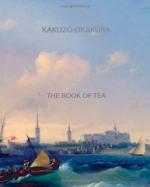
|
| Name: _________________________ | Period: ___________________ |
This test consists of 15 multiple choice questions and 5 short answer questions.
Multiple Choice Questions
1. The art of flower arrangement began with whom?
(a) Christian disciples.
(b) Zennist monks.
(c) Hindu priests.
(d) Buddhist saints.
2. Others were trying to create what feeling?
(a) Spiritual awakening.
(b) Hopelessness.
(c) Fear.
(d) Worry.
3. How does Okakura feel about modern art appreciation?
(a) He supports it.
(b) He enjoys it.
(c) He laments it.
(d) He encourages it.
4. Some tea-masters aimed for what feeling?
(a) Anger.
(b) Happiness.
(c) Jealousy.
(d) Loneliness.
5. Rikyu was a tea master serving his patron lord ____________.
(a) Hideyoshi.
(b) Misaki.
(c) Emi.
(d) Naomi.
6. How is the music described?
(a) Smooth and graceful.
(b) Unique and interesting.
(c) Loud and overbearing.
(d) Powerful and beautiful.
7. Of what did he sing?
(a) Nature, beauty, war, and many other aspects of life.
(b) Silence.
(c) Peace and harmony.
(d) Love and war.
8. The lord believed the rumors and condemned Rikyu to what?
(a) Punishment.
(b) Prison.
(c) Solitary confinement.
(d) Death.
9. Okakura uses this tale to illustrate what?
(a) History.
(b) Cultural studies.
(c) Art history.
(d) Art appreciation.
10. What is kept in the anteroom?
(a) The tea cups.
(b) The tea.
(c) The tea bags.
(d) The tea utensils.
11. Who invented the independent tea room?
(a) Beniko.
(b) Teiko.
(c) Aiko.
(d) Rikyu.
12. Okakura tells the story of the _________ Tea of Rikyu.
(a) First.
(b) Second.
(c) Last.
(d) Only.
13. Is death a great thing to these masters?
(a) Yes.
(b) Often.
(c) No.
(d) Sometimes.
14. Art loving is compared to what experience?
(a) Sleeping.
(b) Dancing.
(c) A religious experience.
(d) A learning experience.
15. He gave his precious utensils out to guests, shattered the tea bowl into fragments, and then took his own life by doing what?
(a) Shooting himself in the head.
(b) Jumping into the sea.
(c) Drinking poison.
(d) Stabbing himself in the stomach.
Short Answer Questions
1. What are the invention of tea masters?
2. Finally a harp master named ___________ took the harp.
3. Their _________ dress have influenced many Japanese.
4. Why did Rikyu frequently have arguments with his patron lord?
5. What is the purpose of the garden path?
|
This section contains 360 words (approx. 2 pages at 300 words per page) |

|




